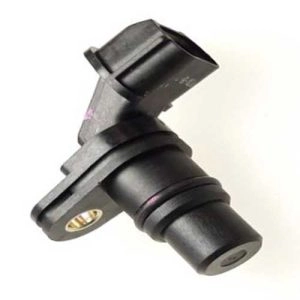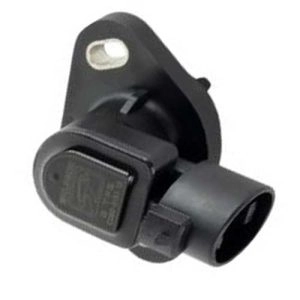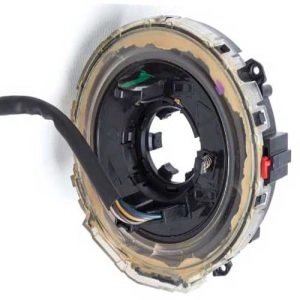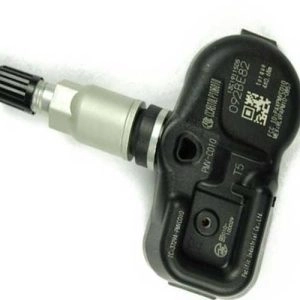Car sensors are considered crucial components that cannot be dispensed with. They are small devices and circuits that car owners often do not know their location. These sensors are fundamental elements of the car's electronic control system. Generally, their aim is to sense and detect dangers surrounding the car, or faults that occur and cannot easily be noticed. Subsequently, they alert the driver to these faults and dangers, typically via the dashboard.
In a previous article, we discussed 6 types of car sensors. Today, we continue our discussion about 7 other important types.
The most important car sensors and their functions:
VSS Car Speed Sensor:It is one of the most famous car sensors, locally known as the kilometer sensor. We all use it clearly, when you glance at your car's settings panel, you will find the speed number you have reached. In fact, the car speed sensor is the one that calculates this figure and shows it to you - it calculates the speed of your car while driving. It is also called the gear speed sensor and if it gets damaged, a range of problems and disturbances occur which affect your driving and safety in the car.

This sensor provides the car's computer with the necessary information. In cars that operate with an automatic transmission, the computer can determine the appropriate gear for effective driving according to this speed. The speed sensor also determines the timing of fuel injection and ignition, works to improve car performance and driving, and controls the amount of emissions produced.
Fuel Level Sensor:Also known as the fuel float sensor in the local market, this sensor measures the level and quantity of fuel inside the tank, then sends this information to the car's computer in the form of voltage values. This then appears on the fuel gauge on the settings screen. Of course, when the amount of fuel decreases or increases in the tank, the fuel gauge indicator changes. When the amount of fuel increases, the indicator gradually moves upward, and when it decreases, it gradually moves downward. This can be clearly observed during the refueling of the car's tank.
The fuel sensor might get damaged during the replacement of the fuel filter. As a result, the fuel gauge may display false and misleading readings. Consequently, your car could be at risk of running out of fuel at any moment.
Also read:Cleaning the throttle without the need for programming.
Exhaust Sensors in the Car:Also known as oxygen sensors, these are important car sensors located within the exhaust system. Their role is to monitor the levels of unburned oxygen from the exhaust and also contribute to determining the amount of fuel burned. This sensor plays an effective role in reducing unburned fuel and harmful nitrogen oxides that pollute the environment. It contains a heating circuit that works to reduce the time it takes to reach optimal temperature after starting the engine. It is worth mentioning that most cars currently contain two or four exhaust sensors.
Throttle Position Sensor (TPS):Also known as the manifold gate position sensor, it is a component of the car's fuel management system, contributing to ensuring the right mix of air and fuel reaches the car's engine. It provides the car's computer with certain information about the fuel pedal. The computer receives this information and combines it with data from other sensors to precisely determine the amount of fuel the engine needs at any given moment. In fact, when you press the fuel pedal to increase speed, the car's computer sends the previous information to the throttle sensor to figure out the fuel consumption the engine is supposed to have. Before the invention of the throttle sensor, there was a metal wire that formed a link between the fuel pedal and the throttle, controlling the throttle valve.

SAS Steering Sensor:It is one of the essential sensors in a car, its function is to calculate and determine the steering wheel rotation angle, so the car's computer can understand whether the car is travelling in a straight line or turning. This sensor is located directly behind the power steering pump, or at the bottom of the steering column in some cars. It is responsible for ensuring the stability of the car and the strength of traction, as it is connected to the multi-name electronic stability technology. Finally, it collects data related to the speed of steering wheel rotation and transmits it to the car's computer, which contributes to facilitate driving at low and high speeds.

TPMS Tire Sensor:It aims to monitor tire pressure and alert the driver when the tire pressure drops. The sensor comes in the form of a small computer located within the car. It's worth mentioning that the Kingdom of Saudi Arabia has mandated the presence of these sensors in all cars since 2018.

When the sensor reads a value less than 25% of the appropriate pressure, a warning light is lit on the dashboard that the driver can see, which is often in the form of a yellow exclamation mark. In some modern cars, more information and readings appear on the settings screen.
Engine Oil Sensor:This is fromCar SensorsThis is directly beneficial to the driver, as it gives you enough time to address some problems and solve them before the engine parts fail. This is because it monitors the engine oil pressure, and immediately alerts you when a specific problem occurs through the dashboard. This is because maintaining the ideal oil pressure is important for protecting the engine and its ongoing operation. Oil pressure can change due to heat and friction between the internal engine components, and therefore these parts need constant oil to prevent them from breaking down.

Comments